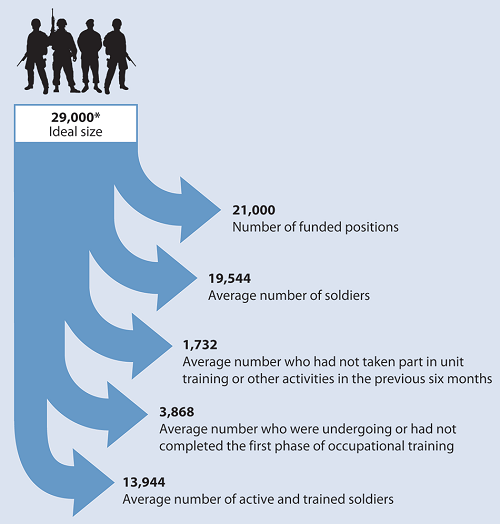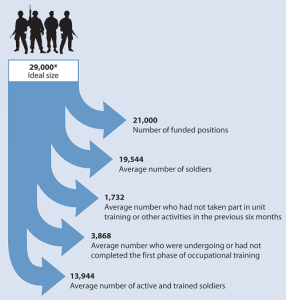The Canadian army’s part-time force is badly in need of better training and equipment, according to the latest report of Auditor General Michael Ferguson.
The auditor general also noted that the reserve force has some serious recruitment challenges and that members are leaving the reserves at a rapid rate.
While records show there are 21,000 army reservists, only 13,944 are considered active and ready for service, according to the auditor’s report. The federal government has set a goal of having and army reserve force of 27,000.
“In late 2015, National Defence set a goal to increase the Army Reserve by 950 soldiers (five per cent) by 2019,” the report said. “In our opinion, this goal will be difficult to achieve given the present rate of attrition.”
The review also found that a large number of reservists do not even receive basic training in areas such as “using a pistol or grenade launcher.”
The report said the “Canadian Army has recognized that it needs to address gaps during the pre-deployment training of army reserve soldiers for international missions.”
The importance of addressing all gaps in individual training during pre-deployment training was noted in a 2014 inquiry into a 2010 training incident in Afghanistan in which four army reserve soldiers were injured and one was killed.
“The casualties occurred while the soldiers were training to operate a particular weapon that was part of the mission’s equipment but had not been included in pre-deployment training,” the report said. “The inquiry concluded that the lack of this pre-deployment training contributed to this incident.”
The audit also found some army reserve units did not follow the Canadian Army’s requirement that all training be both progressive and safe.
“During our audit work, it came to our attention that five army reserve post-exercise reports between 2013 and 2015 stated that collective training was not always progressive and raised safety concerns,” the report said. “For example, in one case, contrary to the Canadian Army’s guidance, units conducted a live-fire exercise without ‘walking’ their soldiers through the exercise beforehand.”
The reserves were not only unprepared for some duties in overseas combat zones where they are used as convoy escorts and force protection but also ill-equipped for responding to emergencies at home such as floods and forest fires
In cases of emergencies within Canada’s borders, up to 600 troops from the reserve units are expected to be deployed. However, the auditor general’s report revealed that in recent years, reservists were deployed in Alberta, Manitoba, and Saskatchewan without the necessary equipment.
For example, during recent training exercises, reservists reported they did not always have access to reliable communications equipment and reconnaissance vehicles larger than snowmobiles.
“This means that army reserve units may have to rely on other Canadian Armed Forces units to provide this equipment, but we were told that it is often not available,” the report said.


